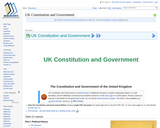
This book features a historical overview of and a look at the present political system in the United Kingdom.
- Subject:
- Civics and Government
- Social Studies
- Material Type:
- Textbook
- Provider:
- Wikibooks
- Date Added:
- 10/16/2017

This book features a historical overview of and a look at the present political system in the United Kingdom.
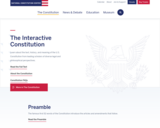
The Interactive Constitution
Learn about the text, history, and meaning of the U.S. Constitution from leading scholars of diverse legal and philosophical perspectives.

The United States Constitution gets a lot of credit for being the first of its kind. The progenitor of democratic constitution making. The spark that started a global fire. Is that the long and short of it, or is there more to the story?
Linda Colley, author of The Gun, The Ship and the Pen, weaves a longer, more complex narrative in this episode. We explore why constitutions (governmental limits, citizens rights and all) became necessary and who put pen to paper before 1787.
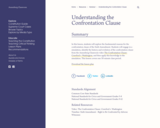
In this lesson, students will explore the fundamental reasons for the confrontation clause of the Sixth Amendment. Students will engage in a simulation, identify the history and evolution of the confrontation clause from the Annenberg Classroom video The Confrontation Clause: Crawford v. Washington, and then apply this knowledge to the simulation.
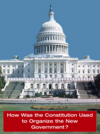
This lesson explains the steps taken by the First Congress to name a president and vice president, to provide funding for the new government, to draft a bill of rights, and to organize the executive and judicial branches. When you complete this lesson, you should be able to explain how the Constitution provides an outline of the federal government’s organization and that details are added by the government itself. You should also be able to explain how the First Congress used the Constitution to name a president and vice president and raise revenue to fund the new government. You should be able to describe how Congress has organized the executive branch and how it has expanded. In addition, you should be able to describe how the Judiciary Act established the federal court system.

This lesson describes some conflicting points of view of leading Framers about the Constitution. Most of the delegates argued for the adoption of the Constitution, although many had reservations about all or parts of it. The reservations of three were so serious that they refused to sign the document. The position of one of these Framers, George Mason, is explored in detail. You also will examine Benjamin Franklin's statement in defense of the Constitution.
When you have completed this lesson, you should be able to explain the positions of Franklin and Mason, and give arguments in support of and in opposition to these positions.
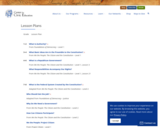
From Foundations of Democracy
In this lesson you will learn about authority. You will learn where it comes from and who uses it. The lesson activities will help you understand why we need authority, how it helps to solve problems and how we choose people to be leaders. We give our leaders a position of authority. There are things that a person in a position of authority may do. There are some things that they may not do. We must decide what the person in the position may do and what they may not do. Our Constitution tells our leaders in the government what they must do and what they may not do.
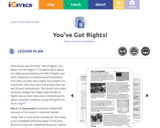
Website Description:
(This lesson was formerly "Bill of Rights: You Mean I've Got Rights?") Students learn about the rights guaranteed by the Bill of Rights and other important constitutional amendments. First they consider what rights they believe are important, then they read and analyze the real text of each amendment. This lesson also helps students analyze the impact that the Bill of Rights has on their daily lives. Completing this lesson prepares students to play the game Do I Have a Right?
Got a 1:1 classroom? Download fillable PDF versions of this lesson's materials.
Student Learning Objectives:
Students will be able to…
*Describe the circumstances and debate that led to the Bill of Rights.
*Compare and contrast the positions of the Federalists and Anti-Federalists as to the Bill of Rights.
*Identify the rights granted by the Bill of Rights and key later amendments.
*Categorize rights in the Bill of Rights as individual freedoms, protection from government power, or rights of the accused.
*Predict what might happen if key rights were missing from the Constitution.